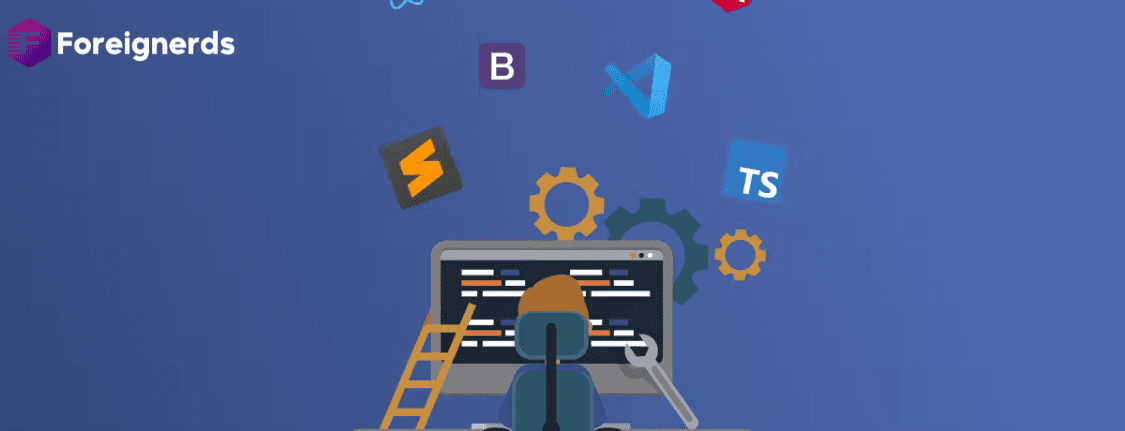- Home
- Design and Development
- Jamstack vs. WordPress – reasons to...

When evaluating “Jamstack” and “WordPress,” it’s important to understand that this comparison is not straightforward. Jamstack represents a development philosophy focused on speed, security, and scalability. On the other hand, WordPress is a comprehensive software platform initially designed for blogging but evolved into a versatile content management system (CMS). In this article, we’ll objectively explore the reasons to consider Jamstack over WordPress.
Jamstack is particularly popular among developers and serves a broad spectrum of use cases. It’s not limited to personal projects or blogs; many renowned companies, including international brands, employ Jamstack for informational, marketing websites, and even e-commerce solutions. The growing community and an increasing number of enterprise-grade APIs continue expanding the possibilities.
While WordPress remains widely used due to its accessibility for non-technical users, it faces competition from platforms like Wix, SquareSpace, and Shopify. Common issues for WordPress users encompass security, speed, user interface, and the complexities associated with its monolithic architecture.
WordPress sites are attractive targets for hackers due to their prevalence. Even though default admin credentials are no longer “admin” and “admin,” security remains a persistent challenge. The extensive attack surface includes vulnerabilities in plugins, requiring constant vigilance and updates.
WordPress can be optimized for speed, but achieving top-tier performance is not guaranteed. Optimization involves selecting lightweight themes, minimizing plugins, and using efficient hosting platforms. Ongoing speed improvements become essential as websites grow in size and receive more traffic.
WordPress struggles to scale efficiently, especially on shared hosting, where multiple accounts share resources. As traffic increases, scaling becomes more challenging, expensive, or both.
While the familiarity of the WordPress UI benefits many users, it can be overwhelming for non-technical individuals. Constant alerts and updates divert from content creation, making the interface suboptimal for both non-technical users and some technical ones.
Developing with WordPress can be frustrating due to its monolithic structure. Everything, including code, database, and server, is tightly integrated, hindering the separation of concerns. Plugin compatibility issues and difficulties setting up local development environments further compound the developer experience.
Jamstack offers solutions to several of the problems encountered in WordPress.
Jamstack prioritizes performance from the start. Serving static files from a content delivery network (CDN) is the default, simplifying speed optimization. WordPress’s complexity makes achieving speed more challenging, whereas Jamstack’s architecture is pre-optimized and conducive to rapid front-end development.
Jamstack’s architecture reduces the attack surface significantly. Typical attacks that rely on server-side code execution are ineffective, as Jamstack sites primarily consist of static files served via a CDN. Even if an API or serverless function is involved, securing private keys is the primary concern, with the rest managed by API providers. Serverless functions, with their brief execution times, are less appealing targets than full server compromise.
Jamstack offers flexibility by allowing teams to use preferred tools and languages, avoiding the constraints of the LAMP stack. Additionally, it promotes Git-centric workflows, enabling seamless collaboration, feature branching, testing, and version control, in contrast to WordPress’s limited guidance on Git usage.
Google places increasing importance on page speed for SEO. Jamstack’s architecture inherently supports high performance, making it easier to achieve favorable SEO rankings. WordPress, with its greater complexity, necessitates more effort to optimize for speed, potentially impacting SEO.
Jamstack reduces hosting costs, as you only pay for what you use, whether handling a thousand or a million requests. WordPress, with its continuous need for server resources, can become cost-prohibitive as traffic scales.
Jamstack embraces simplicity by default, prioritizing static file delivery and avoiding unnecessary complexities. This approach streamlines web development, making it more efficient. WordPress, while versatile, can involve managing various elements like SSL certificates, caching, file permissions, and security, which can be burdensome.
While Jamstack offers significant benefits, it’s not a one-size-fits-all solution. Integrating a content management system and handling site regeneration, architecture, and optimization can be challenging. CloudCannon was developed to address these challenges, recognizing the potential of static site generators like Jekyll in creating a more efficient web.
CloudCannon simplifies setup by allowing users to connect their site repositories through email or existing GitHub, GitLab, or Bitbucket accounts. It offers features such as global testing domains, SSL, a world-class CDN, secure environments for code, automated builds, two-way Git syncing, and more, ensuring efficient development and content management.
By combining CloudCannon with Jamstack, websites benefit from superior speed, security, and scalability. The CMS provided by CloudCannon simplifies the lives of both developers and editors. It offers secure form submission, real-time editing previews, sharing capabilities, and advanced options for hosting, builds, and internationalization, all contributing to an enhanced web development experience.
In this comprehensive comparison of Jamstack and WordPress, we’ve highlighted the strengths of Jamstack, its advantages in terms of speed, security, developer experience, SEO, cost-efficiency, and simplicity. While WordPress remains popular for its accessibility, it faces challenges related to security, speed, scaling, user interface, and developer experience. The integration of CloudCannon with Jamstack further enhances the appeal of Jamstack by simplifying content management and providing robust features for web development. Ultimately, the choice between Jamstack and WordPress depends on your specific requirements and priorities in web development.
© 2013 - 2025 Foreignerds. All Rights Reserved